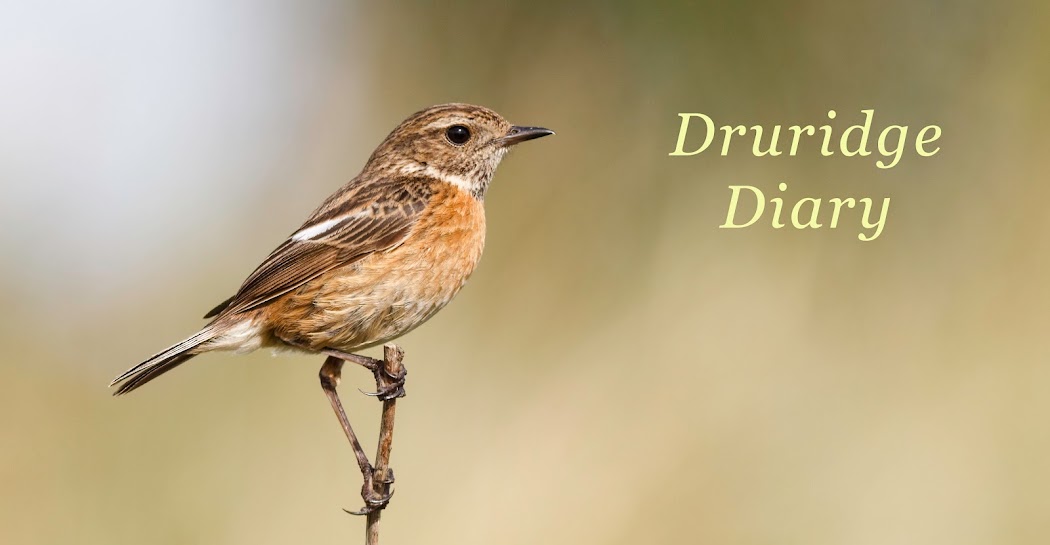I've tried a bit of viz-migging this week, but probably missed the vizmig highlight of the year today - a huge southerly movement of swifts, with thousands of birds logged at east coast hot-spots including
28,0000 at Hummanby Gap. I hadn't anticipated it so didn't get down to the patch until lunchtime, by the time I did there were still lots of swift headed south but nothing like the numbers reported earlier.
After reports of crossbill movements, I positioned myself on the big dune at 5.30am on Wednesday morning. When I arrived on site, there were 11 siskins feeding on the alders before moving north. I estimated about another 100+
siskins, all moving south in small groups of 15-25 until 7.30am. Nothing like the 6500 Tom Tams had at Tynemouth and no crossbills - my target for the morning.
I tried for crossbills on another two mornings but no joy.The meadow pipits kept me entertained though and fly-through little egrets on two mornings were welcome sightings of scarce bird this year. The big dune is a good place to scan the budge fields and I picked up both
wood and green sandpipers from there.
 |
| Meadow pipit song-flighting from the big dune |
In the bay, the
common scoter flock reached a peak of about 1400 birds midweek. On Friday, I abandoned viz-mig and had walk north and south. A family group of pied wags entertained me at the Dunbar burn and a new moth...
 |
| New moth - Pammene aurana (there were at least eight of them) |
 |
| One of the pied wag youths |
 |
| New hoverfly for the patch Cheilosia illustrata - one of the bumblebee mimics (iPhone photo) |
As is typical, the weather deteriorated just in time for the weekend. I manged a wander between showers on Saturday morning and it was nice to catch up with Bob Biggs and ADMc. Waders from the Budge included four, maybe five
ruff including gingery, black and white/cream coloured birds, 19
black-tailed godwits (most or all Greenland race birds), two
knot, two ringed plover and two dunlin. A female
marsh harrier was my first since lockdown and an adult
cuckoo shot through the dunes - northbound.
Today, Janet and I had a walk to the hides, mostly looking for hoverflies but we found the four
spoonbills, that have commuted between Cresswell Pond and the Budge fields, feeding on the doughnut pool from the little hide.
 |
| Four spoonbills- an they were all awake! |
 |
| mating common blue damselflies |
This evening, news came through of a female pied flycatcher near the Budge screen. Pied Fly is a scarce bird in any year at Druridge, unheard of in June, so worth a look before the footy I thought.
Graham Sorrie reported north of the path to the screen-hide. The first bird I got my bins on was a
spotted flycatcher.
 |
| Spotted Flycatcher |
I knew Graham wouldn't have mistaken spotted fly for pied, but for two flycatchers of any species to be at Druridge in June would be mega rare, but I couldn't rule out the two-bird theory and I was right not to as shortly after that a female
pied flycatcher appeared on the same edge. My first pied fly since 2014!
 |
| Pied flycatcher |
I'm not sure what is going on here. Is this early returning birds or very late northerly migrants? Someone on Twitter sent me a link to a
wind map and a
report of high temperatures and forest fires in Arctic Siberia - which is worrying in itself but might explain these birds?





















































